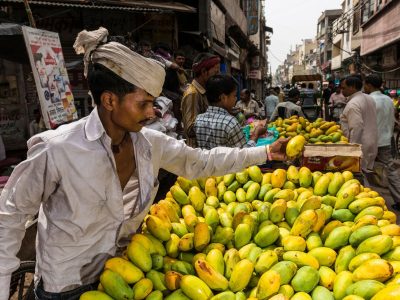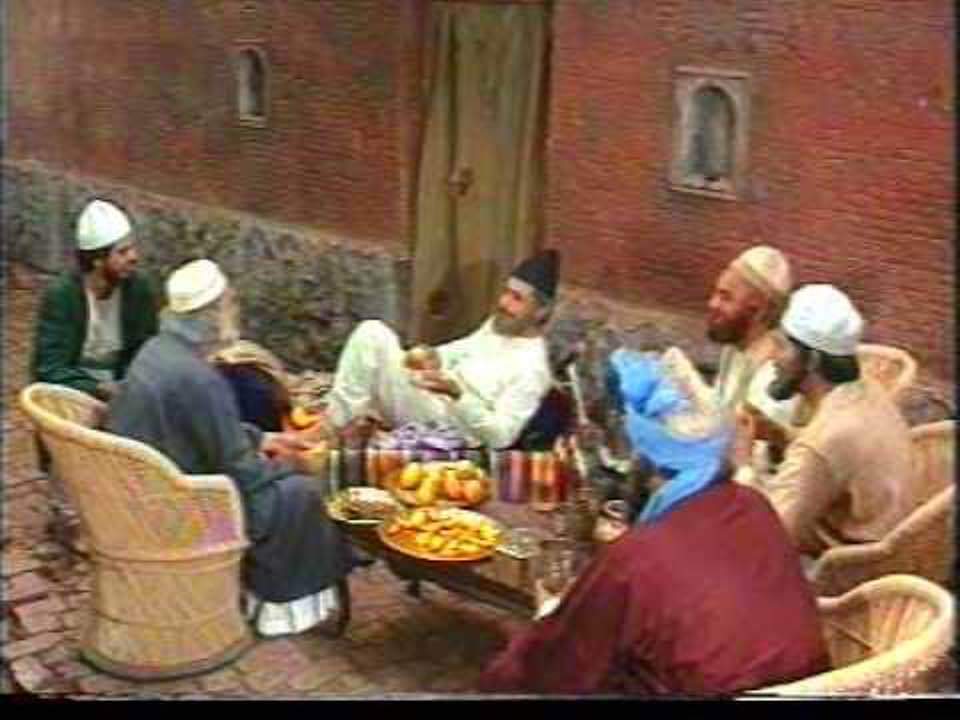Even as political temperature is rising in the Capital along with the scorching summer sun, the mood at Ballimaran in Delhi-6 is electric and bustling as always.
The lanes of Sita Ram Bazaar, Ajmeri Gate, Ballimaran, and Kucha Pati Ram are currently full of mangoes. As you witness the abundance of ‘Dasheri’, ‘Langra’, ‘Malda’, ‘Chausa’, ‘Malihabadi’, ‘Totapuri’, and ‘Kesar’ mangoes in Ballimaran, you can’t help but think of Mirza Asadullah Baig Khan, our beloved Ghalib, who resided in rented houses in Ballimaran and was a true connoisseur of mangoes.
Ghalib’s love for mangoes
There’s no shortage of anecdotes and stories about Ghalib and his love for mangoes. It is said that he was once sitting outside his house with fellow poet friends, enjoying a lively gathering. They were sharing their latest works as all poets do. It was the mango season, much like today, and eventually, the conversation drifted towards mangoes. Ghalib’s friends expressed their preferences for different varieties.
When asked about his favourite variety, Ghalib replied, “In my opinion, only two qualities matter in a mango. First, it should be sweet. Second, there should be plenty of it.”
This clearly shows his unwavering devotion to mangoes and the love for them.
Jardalu, the variety that Delhi misses
It is unlikely that Ghalib ever had the opportunity to savour the ‘Jardalu’ variety of mango from the Chamaparan region of Bihar. The taste and fragrance of ‘Jardalu’ are unparalleled.
After consuming it, one is compelled to declare, “I have never tasted a better mango.”
Generally, Delhi residents have little to no knowledge of this variety. In Ghalib’s time, it is highly improbable that anyone in Delhi had even heard of the ‘Jardalu’ mango. Chances are even slimmer that someone would have gifted him a basket of this exquisite variety. Undoubtedly Ghalib would have considered himself fortunate to have tasted the ‘Jardalu’ mango. Due to logistical reasons, ‘Jardalu’ mangoes are still not found in the Capital. This variety of mango is unique with its characteristics and has an attractive aroma.
Dasheri for whom
Ghalib’s dedication to mangoes was unquestionable. While all mangoes are inherently sweet, it seems Ghalib held a special fondness for the ‘Dasheri’ variety. The pleasure of sucking and eating ‘Dasheri’ is different. Naseeruddin Shah is often seen sucking a ‘Dasheri’ mango while playing the character of Ghalib in the TV serial ‘Ghalib’.
It goes without saying that he would have done a lot research before playing the role, and therefore, the choice of the mango.
Mango lovers know ‘Dasheri’ mango as the ‘chusne wala aam’ (the mango that you suck on) as it is low on fibre. You can put it in a chutney or a cheesecake, but the most satisfying way to eat a mango is to savour the pulp, scrape the skin and pick on the seed, even as its juice runs down your chin.
According to historian Sohail Hashmi, “’Dasheri’ found its way to the Capital from several regions of Uttar Pradesh, including Baghpat and Rataul, with Malihabad being the largest producer. The colour of the skin is very deep yellow, bordering orange.”
‘Dasheri’ mangoes have been cultivated extensively in western Uttar Pradesh. It seems that even during his time, the variety was easily available in Delhi.
‘Dasheri’ hits Delhi in the month of June.
First it is ‘Safeda’, then ‘Langra’ and finally Dasheri and other varieties of mangoes arrive in Delhi. These three are among the favourite mangoes of Delhiites.
Mangoes of Roshanara Orchard
Ghalib would also get mangoes plucked from dozens of trees planted in Roshanara Bagh near Shakti Nagar. Apart from this, there were also mango orchards in Mehrauli in Delhi. Located near Mehrauli, these were planted during the reign of the Mughal Emperor Akbar Shah II (1760-1837). Among the varieties cultivated were ‘Dasheri’, ‘Langra’ and ‘Chausa’. That’s why it seems that Delhi would never have been short of mangoes.
There are also a couple of mango trees in Lodhi Garden. Of all the trees in Lodhi Garden, one mango tree found a spot in the list of 16 ‘heritage’ trees prepared by the Delhi government a few years ago. With no signboard near it, a visitor to the garden is unlikely to know it is on any such list.
Ghalib’s demand from fans
Ghalib’s love for mangoes was so great that he would write letters to his fans, who had mango orchards, asking them to send him sweet mangoes. Even the Mughal Emperor Bahadur Shah Zafar was aware of Ghalib’s fondness for mangoes.

Aqil Ahmed, secretary of the Ghalib Academy, recounts an incident where Ghalib was strolling with Mughal Emperor Zafar in the gardens of the Red Fort. The garden was adorned with numerous mango trees, and Ghalib’s gaze lingered upon them with longing. Observing this, Zafar inquired, “Why are you looking at every mango tree with such intensity?”
Ghalib replied in his characteristic innocent manner, “Your Majesty, a poet once said that every mango bears the name of the person destined to eat it. I am searching for my name.”
Emperor Zafar smiled and sent a generous supply of mangoes to Ghalib’s residence at Ballimaran.
‘Safeda’ sells like hot-cake
Meanwhile, what is sold in Delhi as ‘Safeda’ is actually the Banganapalle variety from Andhra Pradesh and Karnataka. A single piece can weigh up to half a kilo, but you’ll typically get about three or four in a kg.
Arriving in May and continuing until June, the fleshy fruit has a suck-able seed, and skin that’s neither thick nor thin. ‘Safeda’ works well in a shake, a salad, or just eaten plain.
Anand, a fruit shop owner in Bengali Market, says that ‘Safeda’ has a huge customer base. It sells like hot-cake across Delhi.
Delhi is also fond of the ‘Benarasi Langra’, commonly known as ‘Langra’. It is a mango cultivar that was first cultivated in Banaras 250 to 300 years ago.
It is also grown in the states of Bihar and West Bengal.
“The fully ripe ‘Langra’ mango is light green and very fleshy. It has an aromatic, pleasant and a sweet flavour. The unique taste and richness in its flavour makes it an all-time favourite. It is also considered to be the best mango in terms of its rich aroma, sweet taste, juicy pulp and high nutritional value,” says a mango seller in INA market.
Except for Delhiites with deep pockets, others cannot afford Alphonso mangoes from Ratnagiri in Maharashtra.
These mangoes have unique characteristics that make them popular among mango lovers.
“They are juicy and have high pulp content with a creamy texture. They are only available in some South Delhi markets like ‘M’ block of Greater Kailash and Safdarjung Development Area (SDA). Delhi deserves Alphonso mangoes too. They have a strong aroma and sweet taste,” concludes Santokh Chawla, a South Delhi-based businessman.





